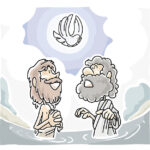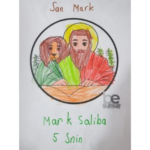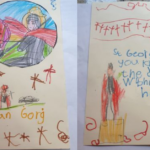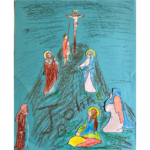
St.Thomas the Apostle is very often referred to as the ‘Doubting Thomas’. He is also referred to as Thomas Didymus, meaning ‘twin’ in Greek, but it is not known who was his twin!
We do not know anything about the background of this Apostle. We know that he was a Jew, born and bred in a humble family in one of the villages of Galilee. Nothing indicates that he was a fisherman and we find no references as to how and when he was called to be one of the Twelve.
His name appears as one of the Apostles in the Synoptic Gospels ( Gospels of Matthew, Mark and Luke), while his personality emerges in the instances where he is mentioned in the Gospel of John. In this Gospel, we find words coming from Thomas himself in three situations, words that are distinctive to him, which is more than what we have regarding some of the other Apostles.
Thomas stands out as a loyal follower of Jesus (Jn 11, 16). When Jesus was returning to Judea to visit Lazarus, the Apostles were hesitant as this could have posed a threat to Jesus’ life because of the increasing hostility of the authorities. It was Thomas who exhorted the other Apostles to accompany Jesus and if need be die with Him!
It was at the Last Supper (Jn 14, 1-5) when, like an inquisitive student, Thomas declared that he did not understand where Jesus was going to prepare a place for them. He received a momentous declaration of Jesus Himself stating that He is the Way, the Truth and the Life.’
Then, after the Resurrection of the Lord, Thomas stands out as the Apostle who moved from a ‘Doubting Thomas’ to an Apostle that made the great ‘public profession in the Divinity of Jesus’. (Jn. 20,24-31) He had refused to accept the Apostles’ statement that they had seen the Risen Lord, stating that he would only accept this reality when he himself would see the marks of the Crucifixion. Jesus gave him this opportunity when He appeared to the Apostles a week later, eliciting from Thomas the declaration “My Lord and my God,” followed by words of praise from Jesus Himself, who also added “Blessed are those who have not seen and yet have believed.”
What happened to Thomas after Pentecost is based on Tradition. It is believed that when the Apostles decided to ‘divide the world’ where they could disperse for evangelizing, Thomas was sent to spread the Word to the Parthians, Medes and Persians. It is believed that he even reached the Malabar coast in India. It was here that Thomas was eventually martyred. He was buried in Mylapore, India, but his remains were later transported to Ortona, Italy.












